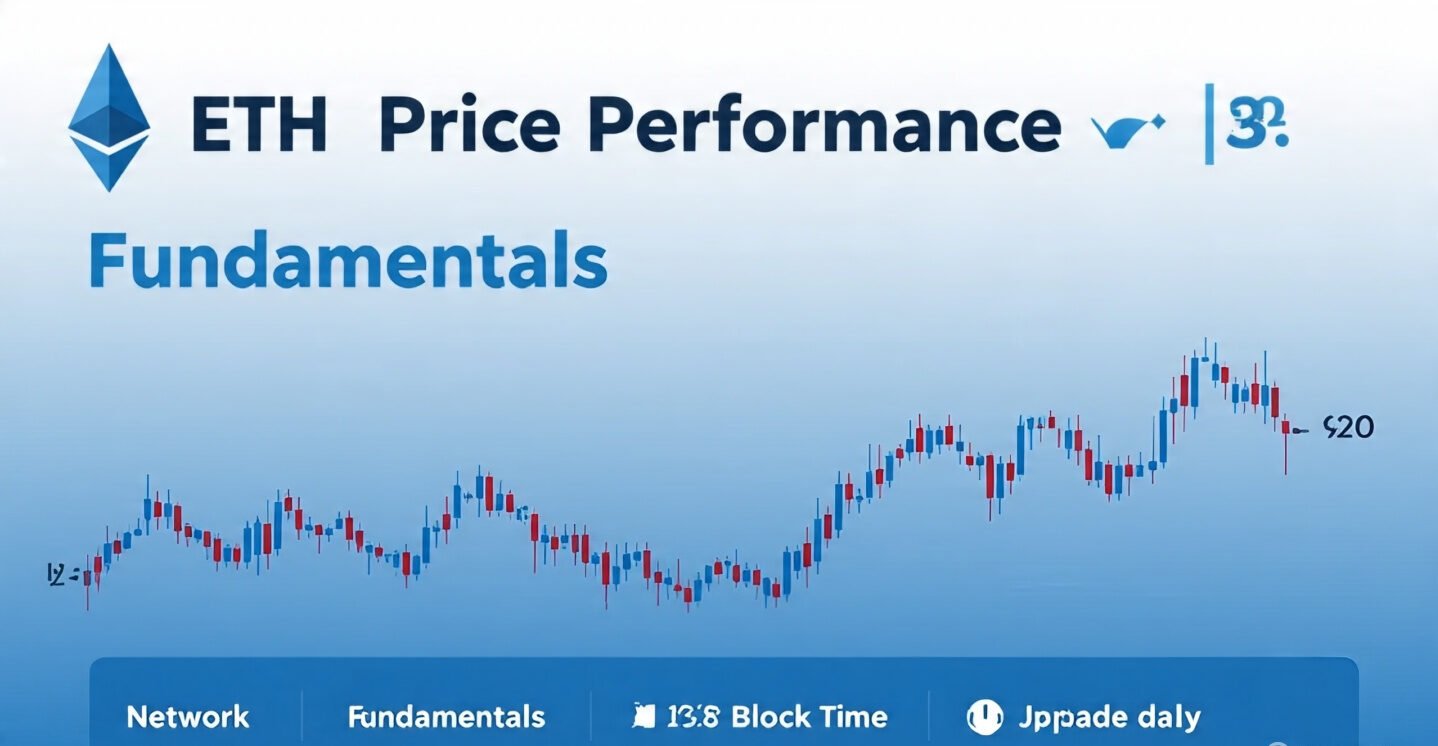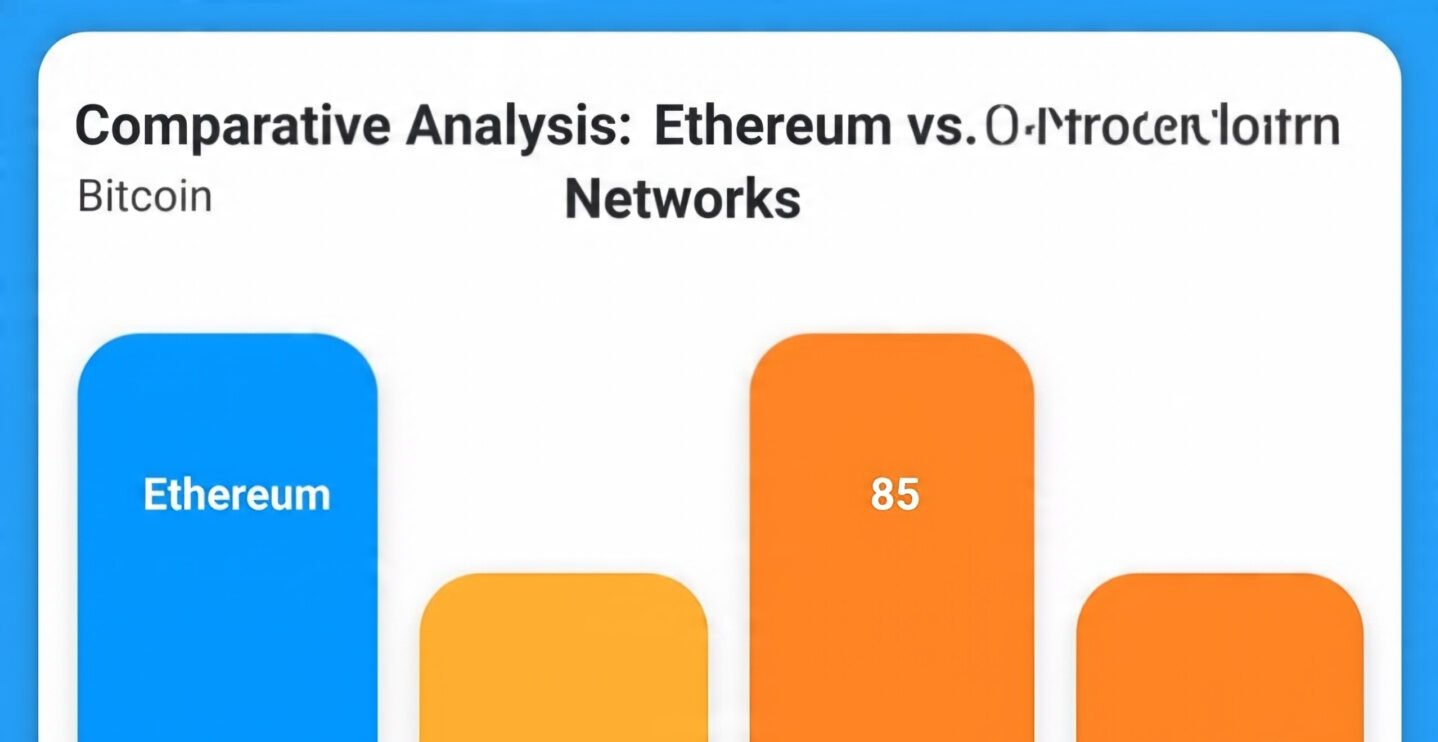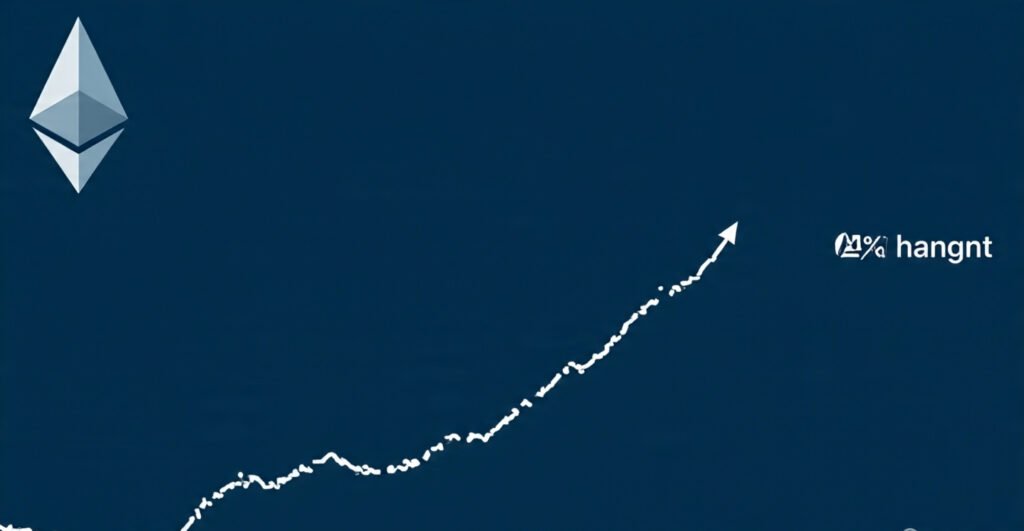The cryptocurrency world witnessed a paradoxical scenario in August 2024 as Ethereum Network revenue experienced a dramatic 44% decline while Ethereum Price soared to unprecedented heights. According to Token Terminal, Ethereum revenue, driven by token burns that benefit ETH holders, fell 44% month-over-month to $14.1 million, down from $25.6 million in July. This unexpected divergence between price performance and network profitability has raised important questions about the sustainability of Ethereum’s economic model in the post-Dencun upgrade era.
The decline in network revenue occurred during a period when Ether demonstrated remarkable strength in the cryptocurrency market. The decline comes despite ETH rallying more than 240% since April, hitting a record $4,957 on August 24. This stark contrast between price appreciation and revenue generation highlights the complex dynamics within the Ethereum ecosystem and the unintended consequences of recent protocol upgrades.
Understanding this revenue decline is crucial for investors, developers, and stakeholders who rely on Ethereum’s network health for their decision-making. The situation reveals the intricate relationship between blockchain scalability, user adoption, and economic sustainability in the evolving cryptocurrency landscape.
Understanding Ethereum’s Revenue Model and Token Economics
How Ethereum Generates Network Revenue
Ethereum’s revenue model fundamentally differs from traditional business models, as it operates on a decentralized network where revenue is generated through transaction fees and token burns. The network’s primary income streams include gas fees paid by users for transaction processing and smart contract execution. These fees are collected by validators who secure the network through proof-of-stake consensus.
The token burn mechanism, implemented through EIP-1559, plays a crucial role in Ethereum’s economics. When users pay gas fees, a portion called the “base fee” is permanently removed from circulation through burning, creating deflationary pressure on ETH supply. This burned amount represents the revenue that accrues to ETH holders through increased scarcity and potential price appreciation.
Network congestion historically drove higher gas fees, resulting in more ETH being burned and greater revenue generation. However, this relationship has become more complex following recent protocol upgrades, particularly the Dencun upgrade, which significantly altered the fee structure and revenue distribution across the Ethereum ecosystem.
The Role of Layer-2 Solutions in Revenue Dynamics
Layer-2 scaling solutions have fundamentally transformed the Ethereum Network revenue landscape by processing transactions off the main chain while settling on Ethereum for security. These solutions, including Arbitrum, Optimism, and Polygon, offer users significantly lower transaction costs compared to mainnet operations.
The proliferation of Layer-2 networks has created a double-edged scenario for Ethereum. While these solutions enhance user experience and network scalability, they also reduce the transaction volume and fees collected by the mainnet. Users increasingly migrate to Layer-2 platforms for daily transactions, leaving only high-value transfers and complex smart contract interactions on the primary network.
This shift represents a strategic trade-off where Ethereum prioritizes long-term scalability and user adoption over short-term revenue maximization. The network’s value proposition evolves from being a direct transaction processor to serving as a settlement layer and security provider for the broader ecosystem.
The August 2024 Revenue Decline: Key Factors and Statistics
Quantifying the Revenue Drop
The magnitude of Ethereum’s revenue decline in August 2024 presents a concerning trend for network economics. Revenue for August totaled over $14.1 million, down from July’s $25.6 million, according to Token Terminal. This 44% month-over-month decrease occurred during a period when cryptocurrency markets experienced significant bullish momentum.
Ethereum’s network fees fell from $49.6 million in July to $39.7 million in August. The 20% decline came after the Dencun upgrade earlier in March 2024. The fee reduction directly correlates with decreased token burning activity, as lower fees result in less ETH being permanently removed from circulation.
Historical context reveals the severity of this decline. The network’s total revenue in August stood at just $39.2 million, a 75% drop compared to the same month in 2023 and a 30% decline from August 2024. These statistics indicate that the revenue challenges extend beyond seasonal variations and reflect structural changes within the Ethereum ecosystem.
Network Activity and Transaction Patterns
The network fee structure experienced significant modifications following the implementation of various upgrades designed to improve user experience. This upgrade significantly lowered costs for layer-2 networks. While beneficial for users, these improvements created unintended consequences for network revenue generation.
Transaction patterns shifted dramatically as users migrated to more cost-effective alternatives. The gas fee reduction made Layer-2 solutions even more attractive, as the cost differential between mainnet and Layer-2 transactions widened substantially. This migration pattern accelerated throughout August, contributing to the revenue decline.
The relationship between network utilization and revenue generation became increasingly complex. Despite maintaining healthy transaction volumes, the reduced per-transaction fees resulted in lower overall revenue. This scenario demonstrates the challenge of balancing user accessibility with network sustainability in blockchain economics.
Impact of the Dencun Upgrade on Ethereum’s Fee Structure
Technical Implementation and Immediate Effects
The Dencun upgrade, implemented in March 2024, introduced revolutionary changes to Ethereum’s data availability and fee structure. Ethereum’s Dencun upgrade is scheduled for next week and is set to reduce fees on layer 2s by at least 10 times, if not more. This upgrade introduced “proto-danksharding” through EIP-4844, creating a new transaction type called “blob transactions.”
Ethereum’s Dencun upgrade cuts layer 2 fees by up to 98%. These dramatic fee reductions made Layer-2 solutions incredibly attractive to users, fundamentally altering transaction flow patterns across the Ethereum ecosystem. The upgrade successfully achieved its primary objective of enhancing scalability but created unexpected challenges for mainnet revenue generation.
The technical architecture changes enabled Layer-2 networks to post data to Ethereum more efficiently. At writing, median transaction fees on layer-2 networks Arbitrum, Starknet, Optimism, and Optimism-based chains Base and Zora have all fallen to one cent or below, according to data from Dune and Ethereum analytics platform Grow The Pie. That’s a 91% to 95% drop in cost for each of those networks.
Long-term Strategic Implications
The Dencun upgrade impact represents a deliberate strategic decision to prioritize network accessibility and scalability over immediate revenue generation. This approach aligns with Ethereum’s long-term vision of becoming the foundational layer for a multi-chain ecosystem rather than processing every transaction directly.
The impact of Dencun on gas fees is undeniable. With transaction costs significantly reduced on Layer 2, users can now explore a wider range of DeFi applications, NFT minting, and other functionalities at a fraction of the cost previously incurred on the Ethereum mainnet. This accessibility improvement could drive long-term adoption and ecosystem growth.
The upgrade’s success in reducing barriers to entry may ultimately benefit Ethereum through increased network effects and ecosystem value, even if short-term revenue metrics appear concerning. The strategy focuses on capturing value through network dominance rather than transaction fee extraction.
ETH Price Performance vs. Network Fundamentals
 The Disconnect Between Price and Revenue
The Disconnect Between Price and Revenue
The ETH price rally of 2024 created an unprecedented situation where token value soared while underlying network revenue declined. The drop occurred amid ETH rallying by 240% since April and ETH hitting an all-time high of $4,957 on Aug. 24. This divergence challenges traditional assumptions about the relationship between network utility and token value.
Multiple factors contributed to the price-revenue disconnect. Institutional adoption, regulatory clarity expectations, and broader cryptocurrency market momentum drove ETH prices higher independent of network fundamentals. Additionally, the deflationary pressure from existing token burns continued supporting price appreciation even as new burn rates declined.
Market participants increasingly viewed ETH as a store of value and investment asset rather than purely evaluating it based on network fee generation. This shift in perception allowed price appreciation to decouple from immediate revenue performance, though questions remain about long-term sustainability of this trend.
Investor Sentiment and Market Dynamics
Cryptocurrency market trends in 2024 favored assets with strong technological foundations and long-term scalability potential. Ethereum’s position as the leading smart contract platform attracted significant investment flows despite revenue concerns. Investors focused on the network’s strategic positioning rather than short-term financial metrics.
The blockchain ecosystem growth narrative supported ETH price appreciation as investors anticipated future value capture through increased adoption and ecosystem expansion. Layer-2 success, while reducing immediate mainnet revenue, validated Ethereum’s scaling strategy and reinforced confidence in its long-term viability.
Institutional interest in Ethereum grew substantially throughout 2024, with spot ETF approvals and corporate adoption driving demand. These developments created price support independent of network revenue fluctuations, though sustainability concerns persist among fundamental analysts.
Comparative Analysis: Ethereum vs. Other Blockchain Networks
 Revenue Models Across Major Blockchains
Revenue Models Across Major Blockchains
Blockchain revenue comparison reveals significant differences in how various networks generate and sustain income. Bitcoin’s model relies primarily on block rewards and transaction fees, creating a more predictable revenue stream. Solana generates revenue through transaction fees and rent collection, while BNB Chain employs a deflationary token model similar to Ethereum.
The network economics of competing platforms often prioritize consistent fee generation over dramatic scalability improvements. This approach provides more stable revenue streams but may limit long-term growth potential compared to Ethereum’s scaling-focused strategy. Each model represents different trade-offs between immediate profitability and long-term network development.
Ethereum’s unique position as both a Layer-1 blockchain and a settlement layer for numerous Layer-2 solutions creates complex revenue dynamics not seen in other networks. This hybrid model offers potential for diverse revenue streams but also introduces new risks and uncertainties.
Market Position and Competitive Landscape
Ethereum’s market dominance in the smart contract space remains substantial despite revenue challenges. The network’s extensive developer ecosystem, established infrastructure, and network effects create significant competitive advantages. However, emerging competitors with more sustainable revenue models pose long-term threats.
Alternative platforms like Solana and Cardano offer different approaches to balancing scalability and revenue generation. These networks provide case studies for sustainable growth strategies that maintain fee generation while improving user experience. Ethereum’s community closely monitors these developments for potential strategic adjustments.
The competitive landscape continues evolving as new Layer-1 platforms emerge and existing networks implement upgrades. Ethereum’s success in maintaining market leadership while navigating revenue challenges will influence the broader blockchain industry’s development trajectory.
Future Implications and Market Outlook
Potential Recovery Scenarios
Ethereum’s future revenue prospects depend heavily on ecosystem growth and adoption patterns. Increased activity across Layer-2 networks could eventually drive higher settlement demand on the mainnet, potentially restoring revenue growth. The success of emerging applications and use cases will determine whether current revenue sacrifices yield long-term benefits.
Protocol developments in the roadmap, including further sharding implementations and efficiency improvements, may create new revenue opportunities. These upgrades could optimize the balance between accessibility and fee generation, addressing current sustainability concerns while maintaining user-friendly experiences.
Market maturation and institutional adoption could also support revenue recovery. As the ecosystem grows and diversifies, new value capture mechanisms may emerge that complement traditional fee-based revenue models. Innovation in tokenomics and governance structures offers additional avenues for revenue enhancement.
Strategic Considerations for Stakeholders
Investment implications of Ethereum’s revenue decline vary significantly based on time horizon and risk tolerance. Short-term traders may focus on price volatility and momentum factors, while long-term investors must evaluate the network’s strategic positioning and competitive advantages.
Developers and project builders should consider the evolving cost structure when designing applications and business models. The reduced fees create opportunities for new use cases but also require adaptation to changing economic incentives within the ecosystem.
Validators and network participants must assess the long-term sustainability of current reward structures. Changes in fee revenue directly impact staking returns and network security incentives, potentially requiring adjustments to participation strategies.
Conclusion
The 44% decline in Ethereum revenue during August 2024, despite record-breaking ETH prices, represents a pivotal moment in blockchain economics. This unprecedented situation highlights the complex relationship between network utility, user adoption, and token value in decentralized systems. While the Dencun upgrade successfully achieved its scalability objectives, the unintended consequences for revenue generation raise important questions about long-term sustainability.
The price-revenue disconnect challenges traditional valuation methods and forces stakeholders to reconsider how blockchain networks create and capture value. Ethereum’s strategic decision to prioritize accessibility and scalability over immediate revenue maximization reflects a long-term vision that may ultimately prove beneficial, though short-term financial metrics appear concerning.
Moving forward, the success of Ethereum’s approach will depend on its ability to capture value through alternative mechanisms while maintaining its competitive position in the rapidly evolving blockchain landscape. The network’s extensive ecosystem, developer community, and technological advantages provide strong foundations for future growth, but adaptation and innovation will be essential for sustained success.

